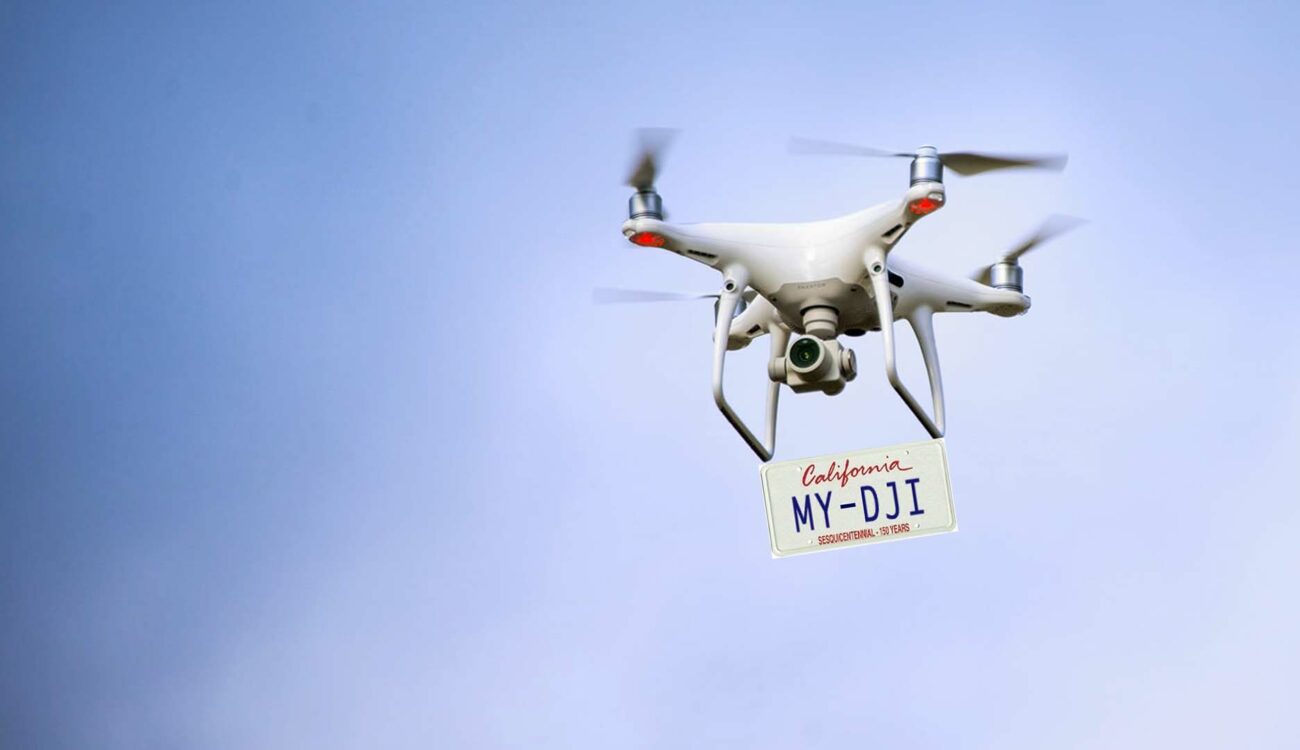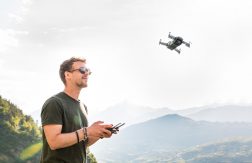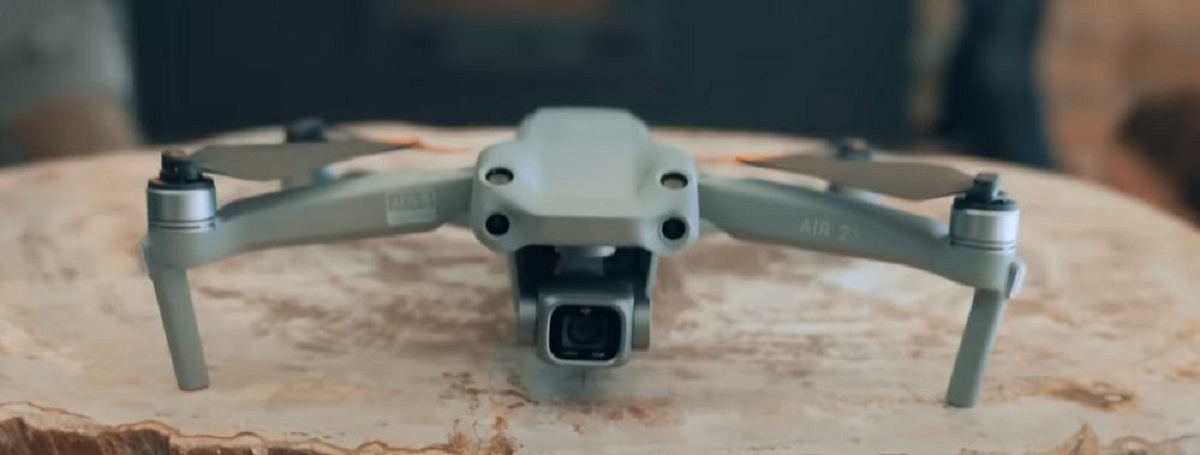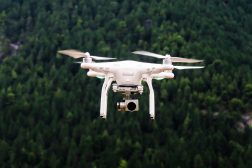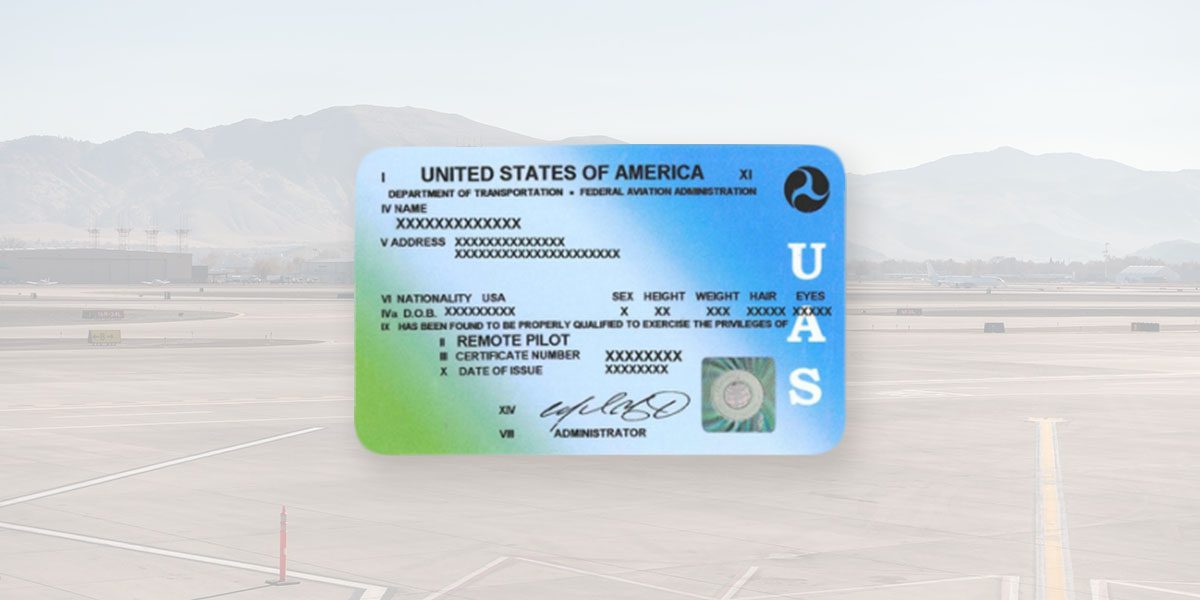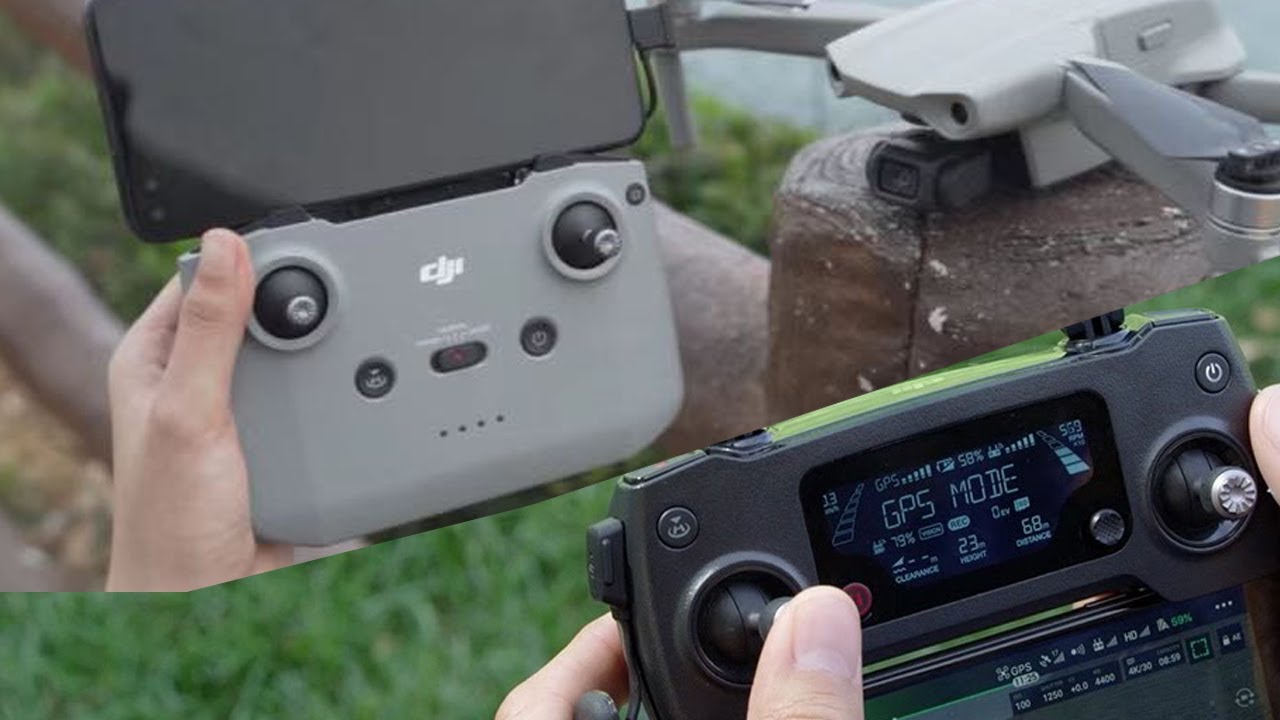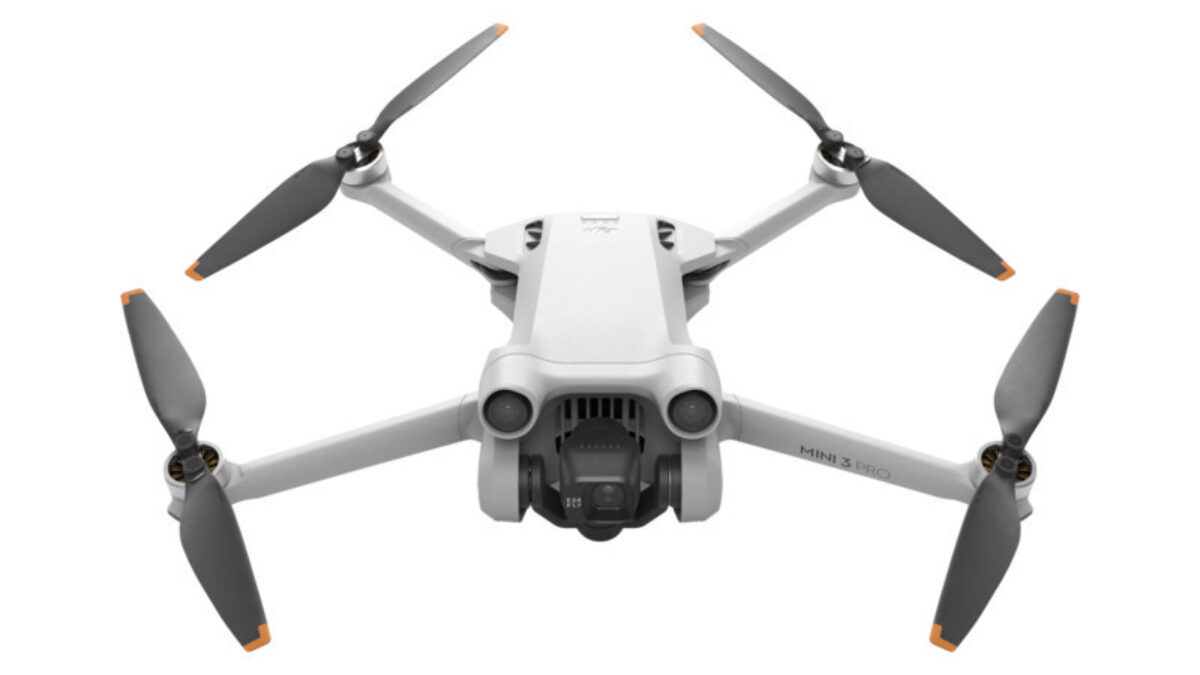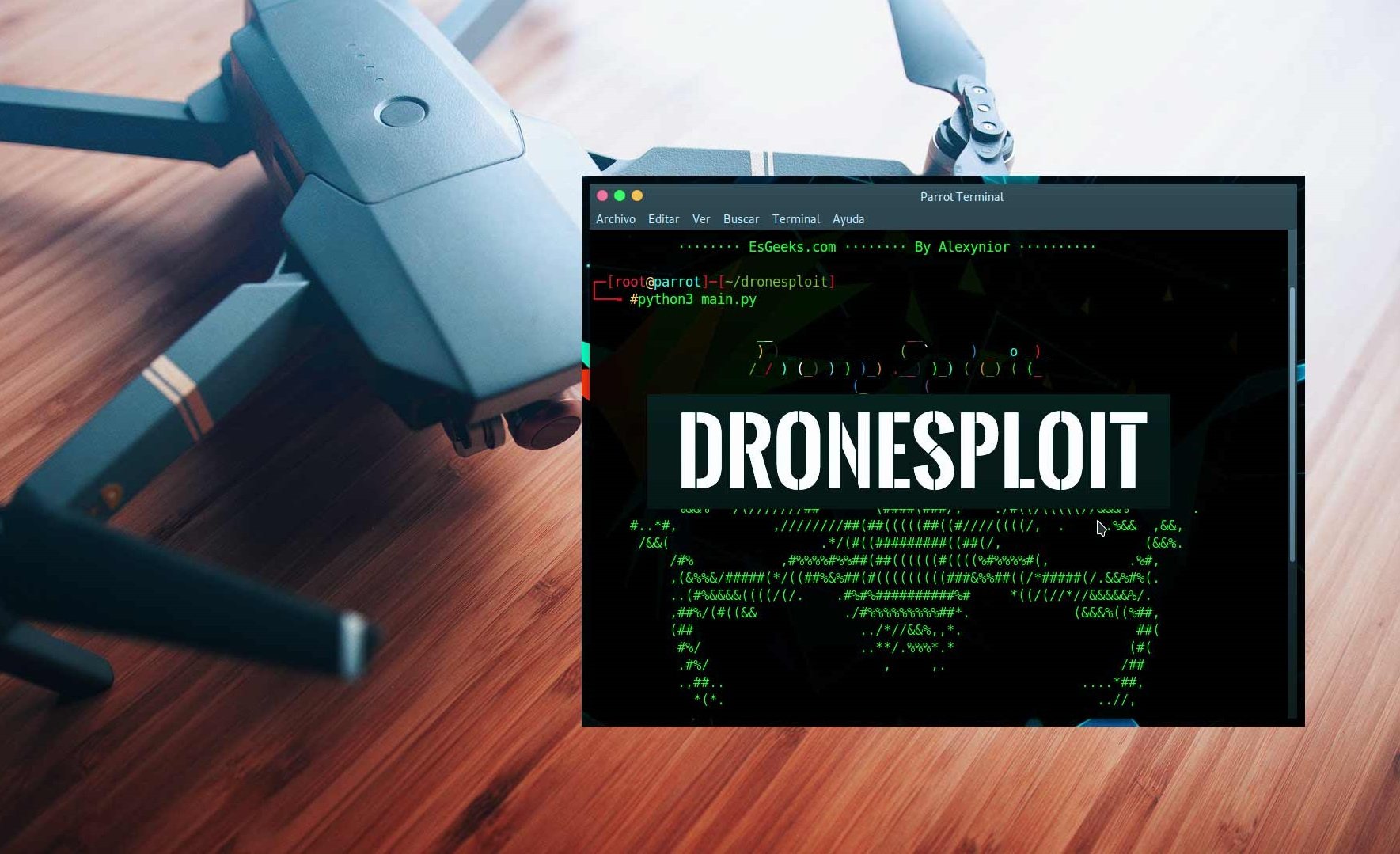Introduction
Welcome to our comprehensive guide on how to obtain a Remote ID for your drone. Drones have become increasingly popular for both recreational and commercial use, and as their numbers continue to grow, it is important to ensure their safe and responsible operation. One crucial aspect of drone operation is obtaining a Remote ID, which is a unique identification code that allows authorities and other pilots to identify your drone in real-time.
In this guide, we will explain what a Remote ID is, why it is important, and how to go about obtaining one for your drone. We will walk you through the necessary steps, including registration with the Federal Aviation Administration (FAA), the application process for acquiring a Remote ID, and the different options available for broadcasting or networking your drone’s identification code.
Whether you are an experienced drone pilot or just getting started, understanding and complying with the Remote ID requirements is crucial to ensure the safety and privacy of airspace operations. So, let’s dive in and learn everything you need to know about obtaining a Remote ID for your drone.
What is a Remote ID for drones?
A Remote ID for drones is a system that provides a unique identification code for unmanned aircraft systems (UAS), commonly known as drones. It is similar to a license plate for a car, but for drones. The Remote ID system allows authorities and other pilots to identify and track drones in real-time, enhancing overall safety and accountability in the airspace.
The primary purpose of Remote ID is to address the rising concerns surrounding drone operations, including privacy, security, and airspace management. With the rapid increase in drone usage, it has become essential to establish a robust system that can identify and monitor drones to ensure their safe and responsible operation.
Remote ID allows authorities to accurately identify the owner and operator of a drone, as well as monitor its location, altitude, and flight path. This information is crucial in the event of an incident, such as a flyaway or a violation of airspace regulations, as it enables authorities to quickly and effectively respond to the situation.
Additionally, Remote ID enhances airspace situational awareness for other pilots and air traffic control. By knowing the presence and location of nearby drones, pilots can make informed decisions and adjust their flight paths to avoid potential conflicts or collisions. This is especially important in areas with high drone activity, such as near airports or in crowded urban environments.
It is important to note that Remote ID does not provide real-time video or audio feed from the drone. It is purely a system for identifying and tracking drones based on their unique identification code, which is transmitted either through broadcast or network methods.
Overall, Remote ID plays a crucial role in ensuring the safe integration of drones into the airspace system. It promotes responsible drone operation, protects privacy, and enhances overall safety for both drone pilots and other airspace users.
Why is Remote ID important?
Remote ID for drones is a significant development in the drone industry, and its importance cannot be overstated. Let’s explore some of the key reasons why Remote ID is crucial for the safe and responsible operation of drones.
1. Enhancing safety and accountability: Remote ID provides a means to identify and track drones in real-time, which is essential for maintaining safety in the airspace. By knowing the location and identity of drones, authorities and other pilots can take appropriate action to avoid potential conflicts and ensure responsible drone operation.
2. Promoting responsible use: Remote ID helps to hold drone operators accountable for their actions. By having their drones registered and identifiable, operators are more likely to adhere to regulations and operate their drones responsibly, reducing the risk of accidents and incidents.
3. Protecting privacy: With the increasing popularity of drones and concerns over privacy, Remote ID serves as a way to address these issues. By identifying drones and their operators, individuals’ privacy can be better protected, as any misuse or violations can be traced back to the responsible party.
4. Facilitating airspace integration: Remote ID is an essential step in integrating drones into the existing airspace system. By providing crucial information about drone operations, it allows air traffic controllers and other pilots to have a clearer understanding of the airspace, minimizing the risk of accidents and improving overall efficiency.
5. Supporting emergency response: In emergency situations, such as search and rescue operations or natural disasters, Remote ID can be instrumental in the coordination of drone operations. Authorities can quickly identify and authorize the use of drones, allowing for timely and efficient response to critical situations.
6. Ensuring compliance with regulations: Remote ID is a requirement in many countries’ drone regulations. By obtaining a Remote ID for your drone, you demonstrate your commitment to comply with the rules and regulations set forth by the aviation authorities, ensuring that you operate your drone within legal boundaries.
In summary, Remote ID is important for enhancing safety, promoting responsible drone use, protecting privacy, facilitating airspace integration, supporting emergency response efforts, and ensuring compliance with regulations. It is a crucial tool that contributes to the overall safety and efficiency of the drone industry.
How to obtain a Remote ID for your drone
Obtaining a Remote ID for your drone involves several steps to ensure compliance with the regulations set forth by the aviation authorities. Follow the detailed guide below to obtain a Remote ID for your drone.
- Registering your drone with the FAA: The first step is to register your drone with the Federal Aviation Administration (FAA). This process requires you to provide your personal information and details about your drone, such as the make, model, and serial number. Once registered, you will receive a unique registration number that must be displayed on your drone.
- Applying for a Remote ID with the FAA: After registering your drone, you will need to apply for a Remote ID. The FAA has established a process for obtaining the necessary identification code for your drone. This application process may require you to provide additional information about your drone and its intended use.
- Deciding between broadcast and network remote ID options: The FAA offers two options for Remote ID: broadcast and network. Broadcast requires your drone to emit a continuous signal that can be received and interpreted by compatible receivers. Network utilizes an internet-based service to transmit your drone’s identification information. Consider the options and choose the one that best suits your drone and intended operations.
- Understanding the requirements and limitations: It is important to familiarize yourself with the requirements and limitations associated with Remote ID. These include restrictions on flying in specific areas, maintaining a reliable and functioning Remote ID system, and adhering to local regulations related to privacy and data transmission.
- Testing and compliance for Remote ID: Once you have implemented a Remote ID system for your drone, ensure that it is functioning correctly by conducting regular tests. Make sure that your drone’s identification code is being transmitted properly and can be detected by authorized systems or receivers. Stay up to date with any changes or updates to the Remote ID regulations to ensure continued compliance.
By following these steps, you will be able to obtain a Remote ID for your drone, enabling you to fly in compliance with the regulations and contribute to the safe and responsible integration of drones into the airspace system.
Registering your drone with the FAA
Registering your drone with the Federal Aviation Administration (FAA) is a crucial step in obtaining a Remote ID for your drone. By registering your drone, you comply with the regulations set forth by the FAA and establish your ownership and responsibility as a drone operator. Let’s dive into the details of how to register your drone with the FAA.
1. Gather necessary information: Before you begin the registration process, gather all the necessary information about your drone. This includes the make, model, serial number, and any other required details. Having this information on hand will make the registration process smoother and faster.
2. Visit the FAA DroneZone: Visit the FAA DroneZone website where you can access the registration portal. The DroneZone is a user-friendly platform that guides you through the registration process step by step.
3. Create an account: If you are a first-time user, create an account on the DroneZone website. You will be required to provide your personal information, including your name, address, email, and phone number.
4. Complete the registration form: Once you have created an account, you will be prompted to complete the registration form. Provide accurate information about your drone, including its make, model, and serial number. You may also need to specify the drone’s weight category, as this affects the regulatory requirements.
5. Pay the registration fee: There is a registration fee associated with the drone registration process. As of [current year], the fee is [registration fee amount]. You will be prompted to make the payment online through a secure payment gateway. Keep a record of the payment confirmation for future reference.
6. Obtain your registration number: Once you have completed the registration process and the payment is confirmed, you will be issued a unique registration number for your drone. This registration number must be affixed to your drone in a visible location, such as the exterior surface or under the battery compartment.
Remember to keep your registration number accessible whenever you fly your drone and be prepared to present it upon request by authorities. Failure to register your drone or carry the registration number can result in penalties and legal consequences.
It is important to note that registration requirements may vary depending on your country or region. Familiarize yourself with the specific regulations and guidelines set by the aviation authorities in your location to ensure compliance.
By following the steps outlined above, you will successfully register your drone with the FAA, establishing your ownership and meeting the necessary requirements for obtaining a Remote ID.
Applying for a Remote ID with the FAA
Once you have registered your drone with the Federal Aviation Administration (FAA), the next step is to apply for a Remote ID. The Remote ID application process enables you to obtain the necessary identification code for your drone that will facilitate tracking and identification in real-time. Here’s how to apply for a Remote ID with the FAA.
1. Visit the FAA DroneZone: Access the FAA DroneZone website, the same platform where you registered your drone. Log in to your account using your credentials.
2. Navigate to the Remote ID section: Within your DroneZone account, navigate to the section dedicated to Remote ID. This section will contain all the information and resources needed to apply for a Remote ID.
3. Review the requirements: Read through the requirements and guidelines for obtaining a Remote ID. Familiarize yourself with the specific documentation and information that the FAA requires for the application process.
4. Compile necessary documents: Gather all the necessary documents required for the Remote ID application. This may include details about your drone, such as the make, model, and serial number, as well as any additional information specific to your drone’s capabilities or equipment.
5. Complete the application form: Fill out the Remote ID application form provided by the FAA. Input the required information accurately and ensure that all fields are properly completed.
6. Submit the application: Once you have completed the application form and attached any required documents, submit your application through the FAA DroneZone portal. Double-check all the information to ensure its accuracy before submitting.
7. Monitor the application status: After submitting your Remote ID application, you can monitor its status through your DroneZone account. The FAA will review the application and may reach out to you for further clarification or documentation if necessary.
8. Receive your Remote ID: If your application is approved, you will be issued a unique identification code for your drone. This code will enable the tracking and identification of your drone during flight operations.
It is important to note that the application process and requirements may vary depending on the regulations in your country or region. Stay updated with the FAA’s guidelines and any changes to the Remote ID system to ensure compliance.
By following these steps and submitting a complete and accurate application, you will be on your way to obtaining a Remote ID for your drone, contributing to safer and more accountable drone operations.
Deciding between broadcast and network remote ID options
When applying for a Remote ID for your drone, you will have two options to choose from: broadcast and network remote ID. Each option has its own advantages and considerations. Let’s explore these options to help you make an informed decision.
1. Broadcast Remote ID: Broadcast Remote ID requires your drone to emit a continuous signal that can be received and interpreted by compatible receivers. This signal contains information about your drone’s identification code, location, and altitude. One of the main advantages of broadcast Remote ID is its simplicity and immediate availability. It allows other pilots and authorities in the vicinity to receive your drone’s identification code and track its movements in real-time. This option is ideal for those operating drones in areas with limited network coverage or for pilots who prefer a straightforward solution.
2. Network Remote ID: Network Remote ID utilizes an internet-based service to transmit your drone’s identification information. With this option, your drone’s identification code is transmitted to a remote server, which aggregates and shares it with authorized parties. Network Remote ID offers more robust features and capabilities, such as enhanced privacy controls, comprehensive flight data, and seamless integration with existing airspace management systems. However, network Remote ID relies on network connectivity and may not be feasible in areas with limited or no internet access. Furthermore, there may be additional costs associated with the use of network services.
When deciding between broadcast and network Remote ID options, consider the following factors:
– Operational environment: Evaluate the geographical area where you typically fly your drone. If you frequently operate in remote or rural areas with limited network coverage, broadcast Remote ID may be more suitable. On the other hand, if you operate in urban environments or areas with reliable network connectivity, network Remote ID may offer more comprehensive coverage and functionality.
– Privacy concerns: Consider your privacy preferences and the privacy regulations in your region. Network Remote ID offers additional privacy controls, allowing you to share your drone’s identification information with authorized parties only. If privacy is a significant concern for you, network Remote ID may be the preferred option.
– Integration and interoperability: Consider any existing systems or requirements in your drone operations that may necessitate integration with broader airspace management systems. Network Remote ID may offer more compatibility and integration opportunities with these systems.
It’s important to note that your choice between broadcast and network Remote ID options may also be influenced by the regulatory requirements in your region. Ensure that you understand the specific regulations and guidelines related to Remote ID before making your decision.
By carefully considering the operational environment, privacy concerns, and integration requirements, you can choose the Remote ID option that best suits your needs and contributes to the safe and responsible operation of your drone.
Understanding the requirements and limitations
In order to obtain and maintain a Remote ID for your drone, it is crucial to understand the requirements and limitations set by the Federal Aviation Administration (FAA) and other aviation authorities. This will ensure that you operate your drone in compliance with the regulations and make informed decisions regarding Remote ID implementation. Let’s explore some of the key requirements and limitations you should be aware of.
1. Compliance with local regulations: Remote ID requirements may vary depending on your country or region. Familiarize yourself with the specific regulations and guidelines set by the aviation authorities in your location to ensure compliance with local laws.
2. Maintaining a functioning Remote ID system: It is your responsibility to ensure that your drone’s Remote ID system is operational at all times during flight operations. This includes verifying that your drone’s identification code is being broadcasted or transmitted properly and can be detected or received by authorized systems or receivers.
3. Restrictions on flying in certain areas: Some areas may have restricted airspace where drone operations are prohibited or heavily regulated. Be aware of these areas and follow the necessary procedures to obtain permission if you intend to fly in restricted zones.
4. Respecting privacy concerns: While Remote ID enhances safety and accountability, privacy is also a significant concern. Ensure that you understand and comply with local privacy regulations when implementing Remote ID. Take necessary measures to protect the privacy of individuals and avoid any unauthorized collection or use of personal data.
5. Transmission requirements and limitations: The FAA has established specific requirements for the transmission of Remote ID data. These requirements include the frequency, range, and format of the transmitted data. Understand the technical specifications and limitations to ensure that your Remote ID system meets the necessary criteria.
6. Data security and integrity: Consider the security of the transmitted Remote ID data to prevent any unauthorized access or tampering. Implement appropriate measures to protect the integrity and confidentiality of the data, ensuring that it is transmitted securely and used only for its intended purpose.
7. Regular updates and compliance: Stay informed about any updates or changes to the Remote ID regulations and requirements. Regularly check for new guidelines and ensure that your drone and Remote ID system remain in compliance with the latest standards. Failure to comply with the regulations may result in penalties or restrictions on your drone operations.
Understanding the requirements and limitations associated with Remote ID is essential to ensure responsible drone operation and compliance with the regulations set forth by the aviation authorities. By following the guidelines and staying informed, you contribute to the overall safety and efficiency of the drone industry.
Testing and compliance for Remote ID
Once you have implemented a Remote ID system for your drone, it is crucial to conduct testing and ensure ongoing compliance with the requirements set by the Federal Aviation Administration (FAA) and other relevant authorities. Regular testing and compliance checks will help ensure that your Remote ID system is functioning correctly and transmitting the necessary information. Let’s delve into the key aspects of testing and compliance for Remote ID.
1. Functional testing: Conduct functional testing of your Remote ID system to ensure that it is operating as intended. Verify that your drone’s identification code is being broadcasted or transmitted correctly and can be detected by authorized systems or receivers. Test the range and reliability of the transmission to ensure that your drone’s Remote ID information is accessible within the required distance.
2. Accuracy of transmitted data: Check the accuracy and integrity of the information transmitted by your Remote ID system. Ensure that the identification code, location, altitude, and other data elements are correctly captured and transmitted according to the defined standards and specifications.
3. Regular system maintenance: Perform regular maintenance and inspections on your Remote ID system to identify and rectify any issues or malfunctions. Keep all hardware and software components updated and ensure that they are properly calibrated to maintain optimal performance.
4. Compliance with transmission requirements: Understand and comply with the transmission requirements set by the FAA. This includes adhering to the specified frequency, range, and format for transmitting Remote ID data. Regularly verify that your system remains in compliance with these requirements to ensure that your Remote ID transmissions are accepted and recognized by authorized systems.
5. Adherence to privacy regulations: Ensure that your Remote ID system complies with applicable privacy regulations. Implement appropriate measures to protect the privacy of individuals during the transmission and handling of Remote ID data. Regularly review and update your privacy policies and data protection practices to remain in compliance with evolving privacy laws and regulations.
6. Stay up to date with guidance and changes: Stay informed about any new guidance or updates related to Remote ID. The FAA and other aviation authorities may release additional guidelines or modify existing requirements. Regularly check for updates and ensure that your Remote ID system remains in compliance with the latest standards and regulations.
By conducting regular testing and ensuring ongoing compliance with Remote ID requirements, you demonstrate your commitment to safe and responsible drone operations. It is essential to prioritize the proper functioning and accuracy of your Remote ID system to contribute to the overall safety and accountability of the drone industry.
Frequently Asked Questions about Remote ID for drones
Here are some frequently asked questions about Remote ID for drones along with their answers:
-
What is Remote ID for drones?
Remote ID is a system that provides a unique identification code for drones, allowing authorities and other pilots to identify and track drones in real-time. -
Why is Remote ID important?
Remote ID enhances safety, promotes responsible drone use, protects privacy, facilitates airspace integration, supports emergency response efforts, and ensures compliance with regulations. -
Who needs to obtain Remote ID for their drone?
In many countries, including the United States, all drones that weigh more than 250 grams (0.55 pounds) need to obtain a Remote ID. However, it is important to check the specific regulations in your region. -
What information is transmitted through Remote ID?
Remote ID transmits information such as the drone’s identification code, location, and altitude. It does not provide real-time video or audio feed from the drone. -
How do I register my drone with the FAA?
To register your drone with the Federal Aviation Administration (FAA), visit the FAA DroneZone website, create an account, and fill out the registration form with the necessary information about your drone. Once registered, you will receive a unique registration number. -
Do I need to apply for a Remote ID if my drone is already registered?
Yes, after registering your drone with the FAA, you need to apply for a Remote ID separately to obtain the necessary identification code for your drone. -
What are the options for Remote ID transmission – broadcast or network?
The two options for Remote ID transmission are broadcast and network. Broadcast requires your drone to emit a continuous signal that can be received by compatible receivers, while network utilizes an internet-based service to transmit the identification information. -
How can I ensure compliance with Remote ID requirements?
To ensure compliance with Remote ID requirements, register your drone with the FAA, apply for a Remote ID, implement a functioning Remote ID system, and follow the specific guidelines and regulations set by the aviation authorities in your region.
These are just a few common questions regarding Remote ID for drones. It is essential to stay updated with the regulations and guidelines provided by the relevant aviation authorities in your region to ensure compliance and responsible drone operation.
Conclusion
Obtaining a Remote ID for your drone is a crucial step towards ensuring safe and responsible drone operations. Remote ID enhances the overall safety of the airspace system by allowing authorities and other pilots to identify and track drones in real-time. Through this guide, we have covered the key aspects of obtaining a Remote ID for your drone, including registration with the FAA, applying for a Remote ID, choosing between broadcast and network options, understanding the requirements and limitations, testing and compliance, and addressing frequently asked questions.
By registering your drone with the FAA and applying for a Remote ID, you demonstrate your commitment to operating your drone within the regulations set by the aviation authorities. Understanding the requirements and limitations associated with Remote ID ensures that you adhere to the necessary standards and contribute to a safe and accountable drone community.
It is important to regularly test and maintain your Remote ID system to ensure its proper functioning and compliance with the regulations. Stay updated with any changes or updates to the Remote ID guidelines to ensure continued compliance.
Remember, Remote ID is not just a legal requirement; it is a crucial mechanism for improving safety, protecting privacy, and facilitating the integration of drones into the airspace system. By obtaining a Remote ID and following the guidelines outlined in this guide, you contribute to the responsible operation and advancement of the drone industry.
Fly safely, operate responsibly, and enjoy the thrilling world of drone flight with your properly registered and Remote ID-compliant drone!







